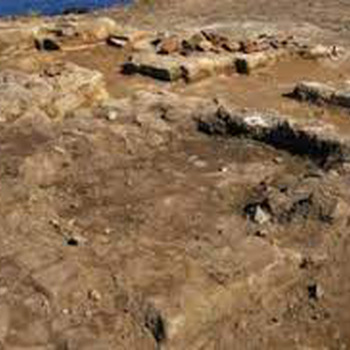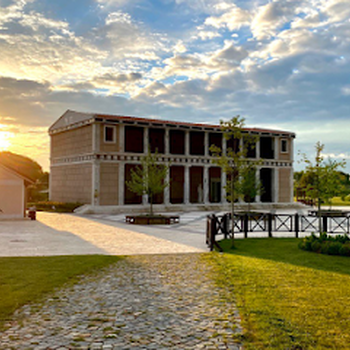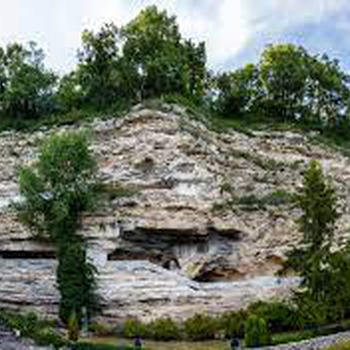Roman bath - small thermal baths
Overview
The Roman baths are located in the southeastern part of the modern city of Varna, near the port and are among the best preserved architectural monuments from the ancient period in Bulgaria. They were built during the Roman era, at the end of the II century and represent the largest Roman bath in the Balkans. According to the studies, the height of the vaulted structures was over 20 m, and the total area of the facility was about 7000 m². The baths functioned until the end of the 3rd century. They had an important social function in ancient Odessos, which from 15 BC. is part of the Roman Empire in the province of Moesia, but retains some independence (such as the right to mint its own coins and no Roman garrison). As the main port of Moesia, the city was strongly influenced by Roman culture, as evidenced by the baths. The heating system of the bathrooms is unique. It is connected to the double floor and special cavities, leading the warm air to the top of the building, built near hot mineral springs, which are still used today in Varna. Visitors to the baths entered spacious halls, creating a natural barrier to the cold air, then a huge hall (ballast), which was a kind of center where the men of Odessos gathered to discuss important social issues. The ruins are relatively well studied, although between the two fenced areas there are houses and churches, under which it is certain that many ancient buildings and artifacts are hidden. The baths attracted the interest of historians and archaeologists long before the start of archeological excavations. As early as 1906, the Austrian scientist E. Kalinka defined the remains as an ancient building, but the Shkorpil brothers have the most significant merit for arousing the scientific interest in this antiquity and for its preservation. The excavations of the Archaeological Museum - Varna from 1959 to 1971 under the direction of Milko Mirchev, revealed the main part of the building. Below the existing surrounding streets today remain part of the premises, as well as the southernmost artery of the western underground gallery. The ongoing archeological excavations clarify the purpose of the building and establish the epoch of its construction. The discovered building is part of the thermal baths of the Roman city of Odessos. The architectural style suggests that they were built in the late II - early III century. Coins found in the sewers, minted during the reign of Emperor Septimius Severus (193 - 211), confirm this dating. The latest coins found are from the time of Emperor Tacitus (275). Thus it was established that the baths functioned until the end of the III century. The grandeur of the construction, the flawless execution of the brilliant architectural design, the richness of the decoration define the baths as a remarkable monument of ancient architecture in the Bulgarian lands. They testify to the flourishing of culture in the city in the II-III century, to its wealth and prosperity. Odessa baths are one of the largest in the European part of the Roman Empire. During the excavations a pedestal of the statue of Claudius Aquila was found, as well as statues of the Roman gods Heracles, Victoria and Mercury, which probably decorated the halls and gave them a solemn appearance. As can be seen from the found inscriptions, the patron deities of health, Asclepius and Hygia, had a sanctuary in the northwestern part of the baths. Archaeologists have also come across fragments of marble window frames shaped like the curve of Heracles, who was also worshiped as the patron god of springs. During the Ottoman period and after the Liberation until the end of the 19th century, the dungeons of the baths were used as a prison, called Ichkale. Today in the summer there is a summer theater in the baths and concerts are given.
Recommended
- Varna Dolphinarium
- Panoramic Galata site
- Varna aquarium
- Bridge of desires
- Archaeological Museum
- Sea Garden
- Lighthouse
- Doll Museum
- Lake in the sea garden


 Bulgarian
Bulgarian Romanian
Romanian




